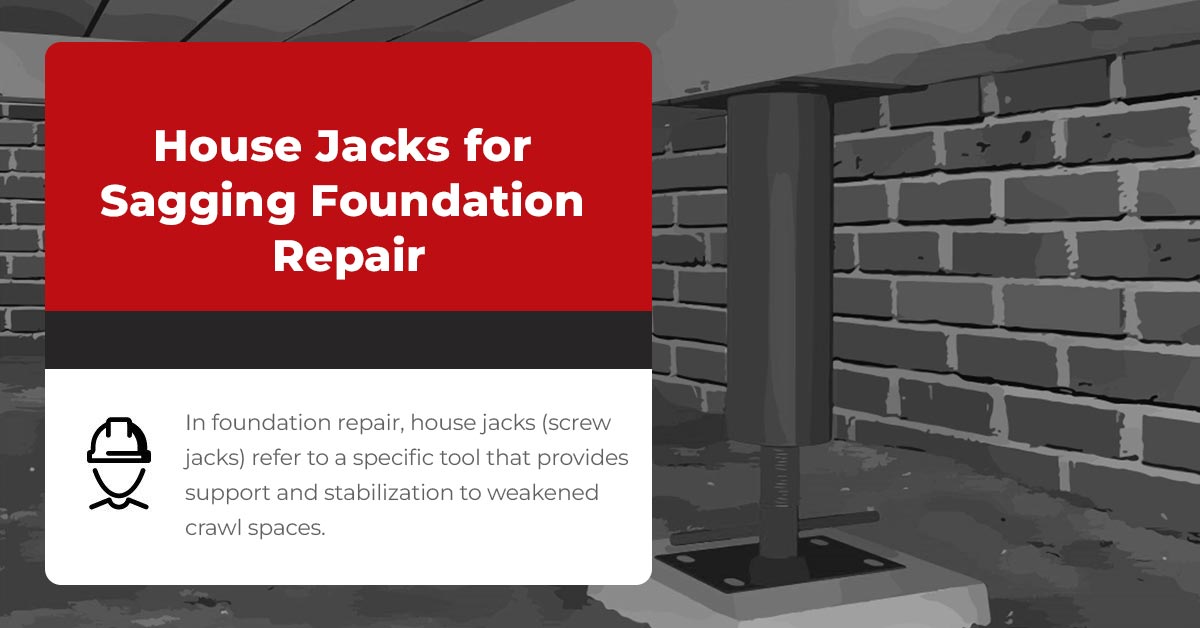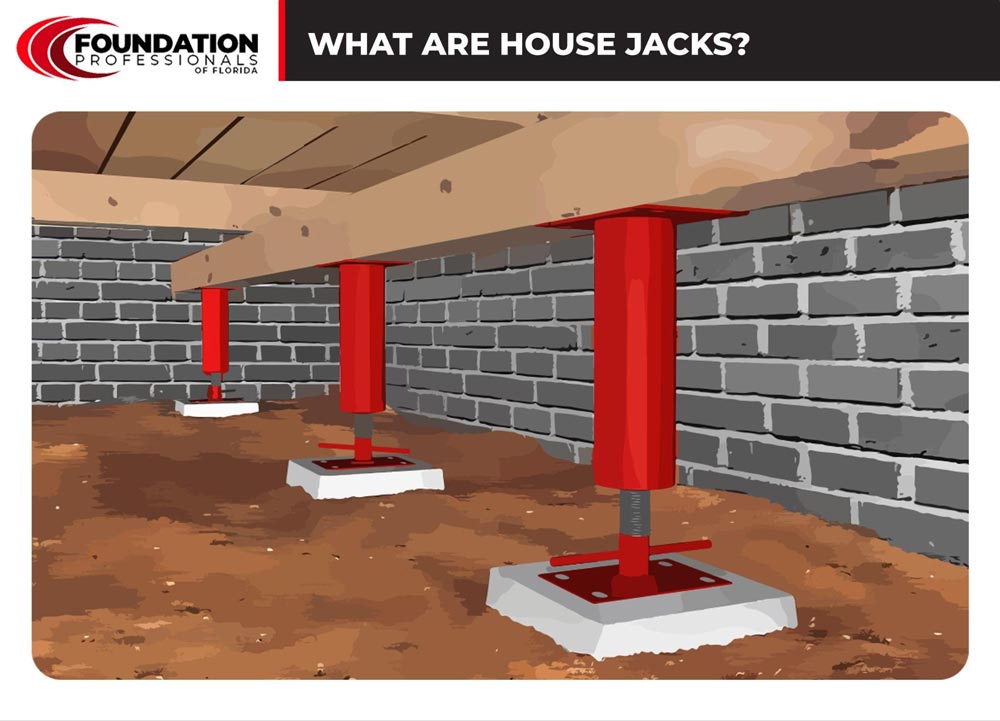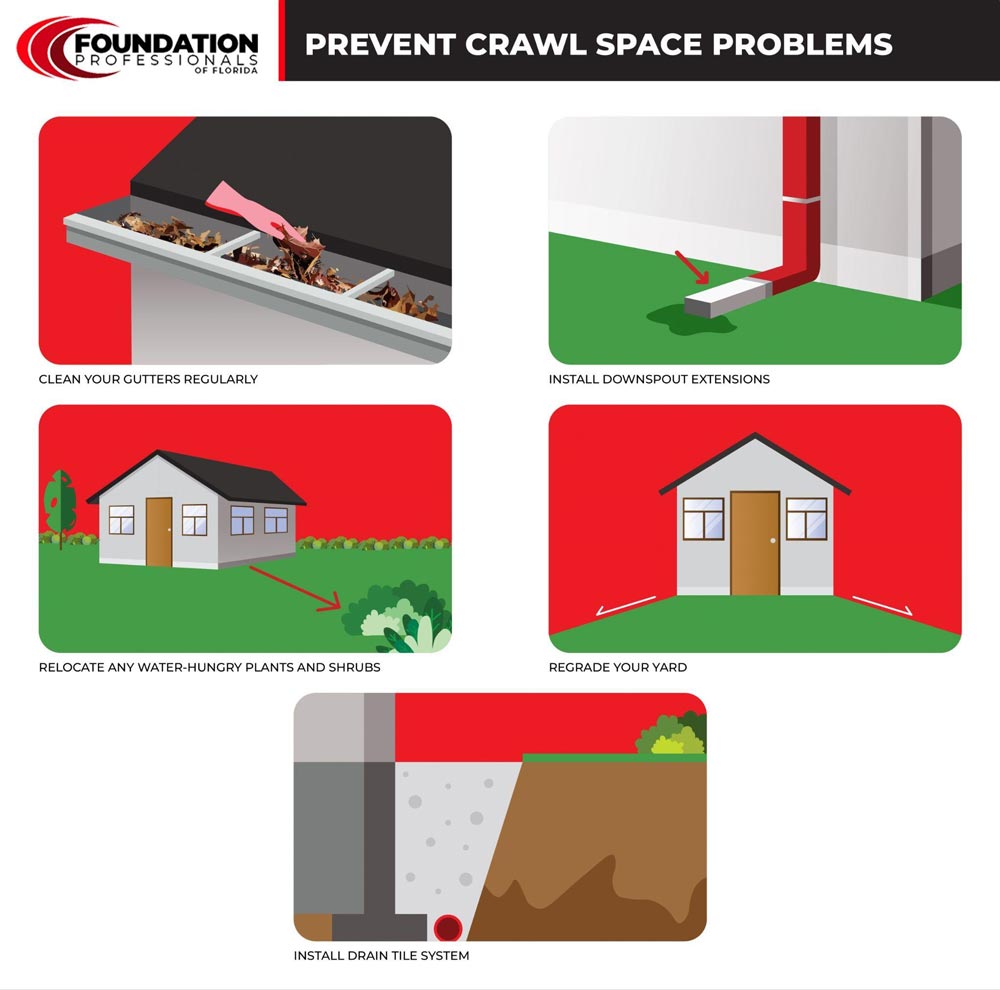Are you a homeowner with a sagging crawl space? If so, then you may be wondering what to do and feeling a bit overwhelmed. Well, fear not–house jacks may be the repair solution you’ve been waiting for. In this blog post, we’ll discuss why crawl spaces sometimes sag, how house jacks work to repair the sagging, signs that you might need house jacks and more.
What Are House Jacks?
In foundation repair, house jacks (also known as screw jacks) refer to a specific tool that supports and stabilizes weakened crawl spaces. These jacks consist of a threaded rod that is inserted vertically into a metal base plate and then extended or retracted by twisting the rod. As the rod is turned, the jack’s height can be increased or decreased, allowing for precise adjustments and compensation of uneven or sagging foundations.
House jacks are commonly utilized in crawl space repair projects due to their versatility and effectiveness. They can be used to support beams, level floors, and prevent further damage caused by excessive moisture or settling. In addition, house jacks can be adjusted with a minimal amount of effort and equipment.
Installing House Jacks Is Not A DIY Project
It is essential to note that house jacks should only be installed and handled by qualified professionals in order to prevent compromising the structural integrity of the crawl space or placing individuals in danger. Homeowners should seek out reputable crawl space repair companies with experience in utilizing house jacks and other appropriate tools.
Common Causes of Sagging Crawl Spaces
The causes of sagging crawl spaces can vary, but some of the most prevalent factors are poor drainage, expansive soil, problems with existing house jacks, inadequate support piers, and wood rot on the wooden structures in the crawl space.
Poor Drainage
Poor drainage is often a contributing factor in the development of sagging crawl spaces. In these instances, water can accumulate in the crawl space, leading to soil erosion and weakening supporting structures. Excessive moisture can also lead to mold formation, further exacerbating the issue.
Expansive Soil
Clay-rich expansive soil can also contribute to sagging crawl spaces. When expansive soil becomes saturated with water, it expands, causing the foundation to shift and settle unevenly. This can lead to structural damage and may impact the home’s overall integrity.
Problems with Existing House Jacks
Over time, house jacks can deteriorate if they aren’t protected from corrosion and become less effective at supporting the weight of the home. This can cause the foundation to sag or shift, leading to many problems.
Not Enough Support
Crawl space support posts are designed to support the weight of the home–but if there are not enough of them or they are improperly placed, then the crawl space can become unstable and unsafe.
Wood Rot
In time, wooden structures can become weakened by water damage, leading to wood rot and other issues. The result is structural instability and the risk of collapse.
Signs That Your Crawl Space Might Need House Jacks
There are several signs you should look out for that could indicate that your crawl space needs additional support:
- Sagging floors – If the floors in your home are uneven or sagging in certain areas, it could be because of a weakened foundation, potentially due to a failing crawl space.
- Cracks – If you start to notice cracks in the walls, floors, or ceilings, this could indicate that the foundation is shifting and additional support is required.
- Damp, musty smell – If your crawl space is experiencing consistent moisture, it can lead to mold growth. Not only is this an issue of structural integrity, but it can also be detrimental to the health and safety of those living in the home.
- Problems with doors and windows – Another warning sign that your crawl space may need house jacks is when your doors and windows start sticking or jamming. This can be an indication of foundation settling or shifting. By installing house jacks, you can help redistribute the weight and support the foundation, preventing further damage from happening.
If you notice any of these warning signs, it is time to contact a professional foundation repair contractor and ask for an inspection. If there is a problem, repairing it promptly will help prevent further damage from occurring and protect the overall structural integrity of your home, providing you with peace of mind for years to come.
For more information, see our article 9 Benefits Of A Crawl Space Moisture Barrier.
Things You Can Do to Help Prevent Crawl Space Problems
Believe it or not, most foundation problems are caused by water. Therefore, one of the most effective ways to prevent foundation problems is to ensure that water is drained away from the foundation. In other words, you don’t want soggy soil around your home’s foundation. Here are some things that can help keep the ground around your house dry:
- Clean gutters regularly – Gutters play a crucial role in protecting foundations by collecting rainwater from the roof and diverting it away from the foundation. However, if these gutters are not cleaned regularly, they can become blocked by debris such as leaves and twigs. This blockage can cause water to overflow, run down the side of the house, and soak into the ground around the foundation.
- Install downspout extensions – These extensions direct rainwater away from the foundation, thus reducing the amount of water that reaches the surrounding soil.
- Keep large trees away from the foundation – Some trees have root systems as large as their canopies and can cause significant damage by drawing water from the soil, causing dirt to settle and roots to grow under the foundation. Keep large trees with extensive root systems at least 50 feet away from the foundation.
- Regrade the yard, if necessary – A yard that slopes away from your home allows proper water drainage away from the foundation.
- Install a drain tile system – A drain tile system consists of a network of buried, perforated pipes installed around the foundation walls at the footing level. These pipes collect excess groundwater and direct it away from the foundation, making sure the soil around the foundation remains dry.
If you think there might be a problem in your home’s crawl space, contact us today to schedule a free crawl space inspection. If we find a problem, we’ll provide you with a repair estimate.



